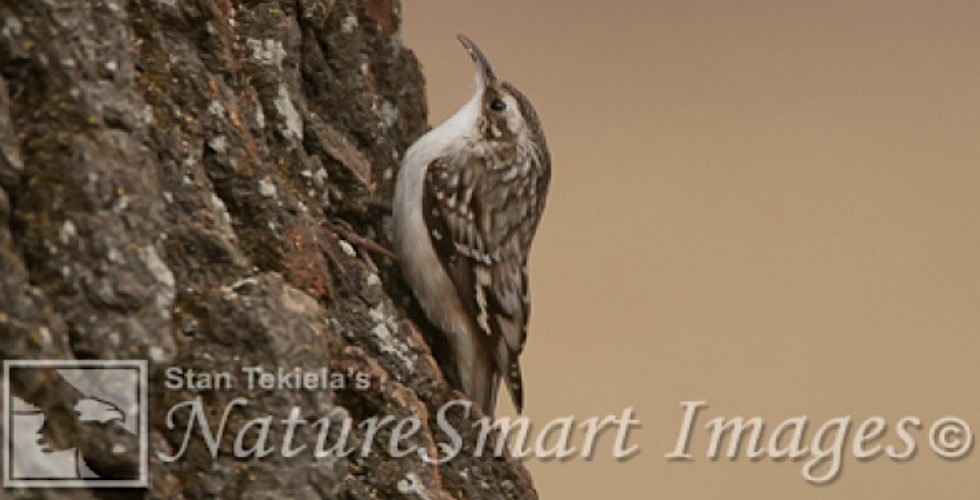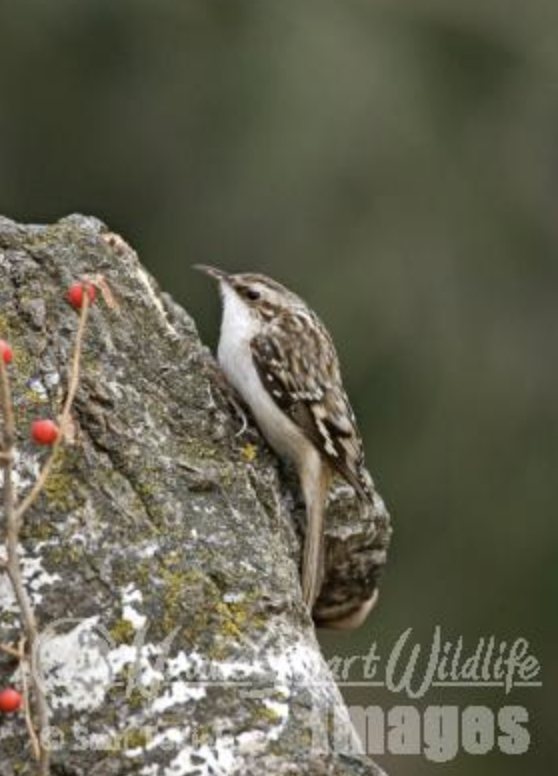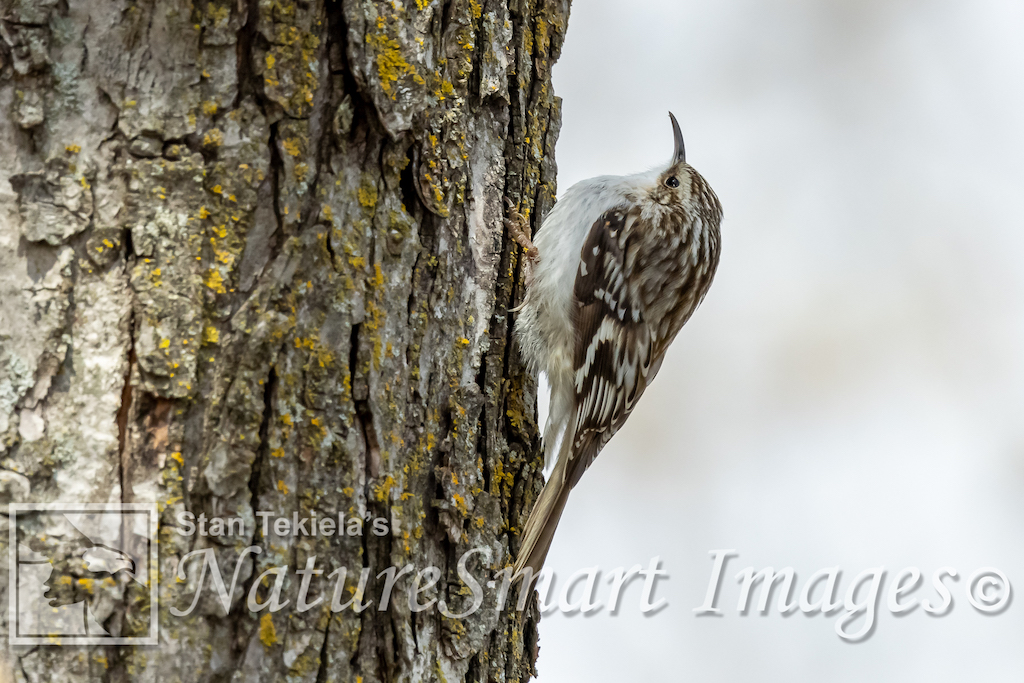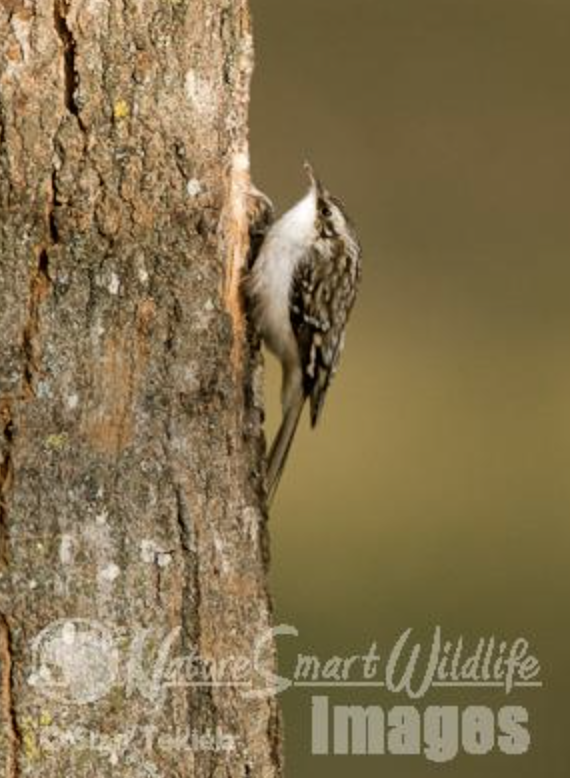
The Brown Creeper, an Unsung Hero
Wildlife photographer and naturalist Stan Tekiela has always been interested in the unsung heroes or the rule breakers of nature—the kinds of critters or birds that are common, yet no one seems to pay any attention to them. Today he introduces us to the tiny Brown Creeper (Certhia americana).

Despite a name that makes it sound like something right out of a horror movie, the Brown Creeper is a small, lackluster, brown bird. Dark brown with lots of white streaks, the Brown Creeper looks like a brown leaf.
The white belly can stand out, but you really don’t see the belly very often. A broken white eyeline over the eyes and a downward curved bill are the only unique features of this nondescript bird. One thing is for sure, their plumage is such that they blend into tree bark so well that they are almost invisible. This is one of the reasons why most people haven’t noticed this bird before.
Measuring only 4-5 inches in length, they are small—about the same size as a Black-capped Chickadee. They are the only species of treecreepers in North America. The treecreepers are a family of passerine birds that are found around the world. The Brown Creeper is one of seven species, with six found in Europe and Asia and the Brown Creeper in North America. During the winter they are found in every state in the nation. During summer they nest in the high elevations of the Rocky Mountains and along the west coast. In the East they breed from Minnesota to Maine.
Let me address the creepy name of the Brown Creeper. The way these birds find food is to “creep up” a tree trunk. Brown Creepers fly to the base of a large tree, then slowly creep up the trunk using their long, curved bills to probe into cracks and crevices to find insects or insect egg sacks. Once they reach the top branches of the tree, they fly down to the base of another tree and start the process all over again. Their extra short legs and extremely large toes with long hooked claws hold them close to the trunk of the tree. They also have long, stiff tail feathers that act like the third leg of a tripod to stabilize them as they move up the tree.

But what I find very interesting is their nesting behavior. The Brown Creeper male will sing a high-pitched sweet song to attract a female. If he attracts a female, the male will chase her around before breeding. Both the male and female select the nesting site, but the female does most of the nest building. Now for the unusual part. Their nest is constructed of small twigs and is located under the sloughing bark of a dead or dying tree. When a tree dies, the bark loosens up before falling off. Behind this loosely hanging bark is where these birds build their nests. This is one more good reason to leave dead or dying trees standing. The dead trees provide a lot of nesting potential for a wide variety of birds. Occasionally, the creeper will use a natural cavity in a tree for nesting.
Females do all the incubating, while the males bring food. This is an unusual behavior in the small bird world and is more common in larger birds such as hawks, owls, and eagles. The young stay in the nest upwards of 15 or so days. The parents continue to feed the young for several weeks after they leave the nest.

While insects make up most of their diet, they will occasionally feed on seeds. One thing is for sure, they rarely if ever land on the ground. They are strictly tree dwellers. They live in thickly forested areas with large trees. They are good in both deciduous and coniferous forests.
Unlike many other birds, over the past 50 years the Brown Creeper has increased in population about 1.5% per year. Forest-dwelling birds are doing better than our prairie or grassland birds.
So, this spring, stop and take a closer look at any small brown bird you might see. It just might be the most common bird that you have never noticed—the Brown Creeper.
If you enjoyed Stan’s post about Brown Creepers, you may enjoy one of his amazing nature books: Majestic Eagles, Wild Birds, Backyard Birds: Welcomed Guests at our Gardens and Feeders, and his latest book Bald Eagles: The Ultimate Raptors.
You can follow Stan on Facebook and Twitter, or contact him via his web page. Stan’s nationally syndicated NatureSmart Column appears in more than 25 cities spanning 5 states (Minnesota, Wisconsin, Michigan, Illinois, and Pennsylvania) and is circulated to more than 750,000 readers.
For more stories about wildlife and nature, sign up for our newsletter now!


